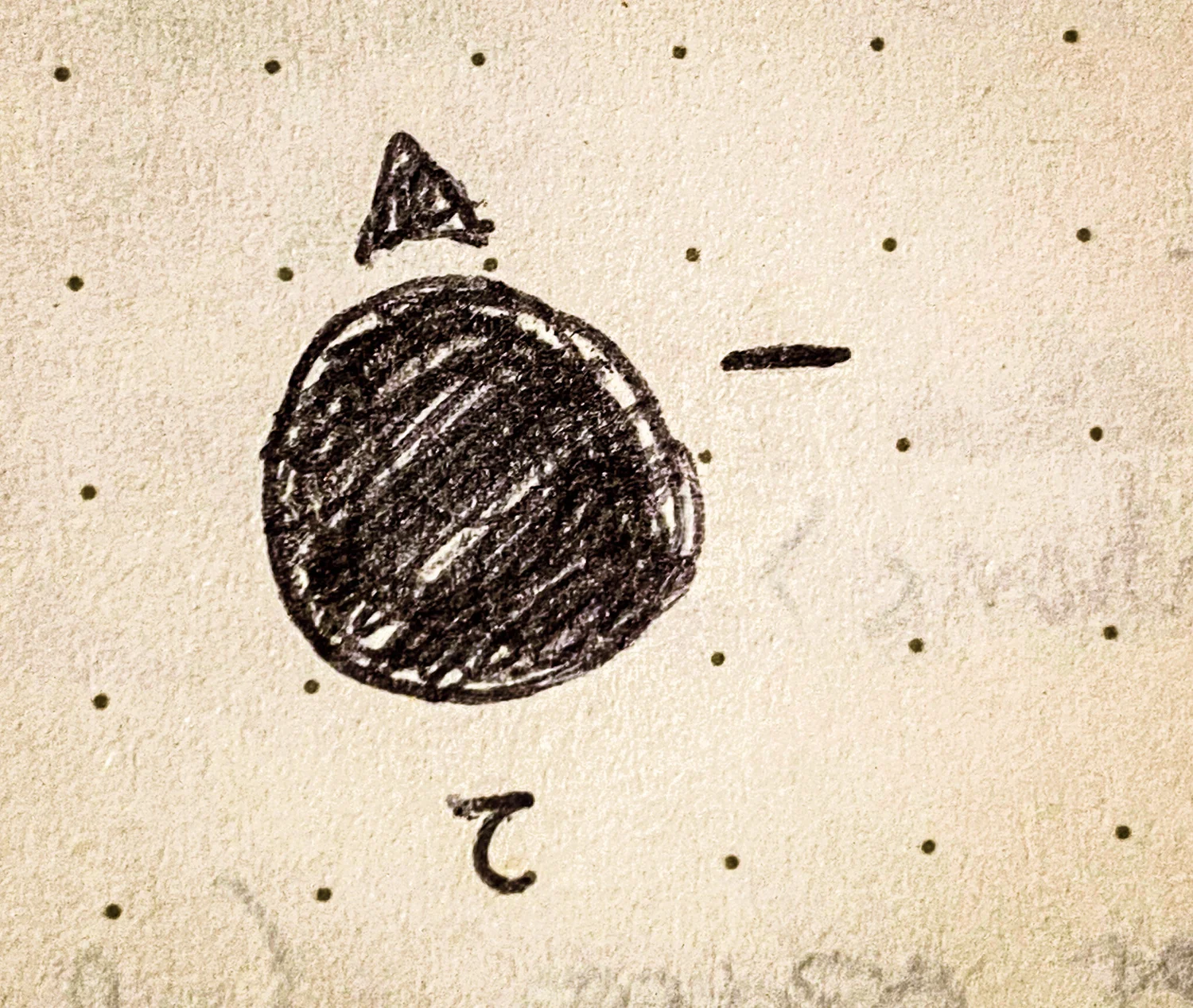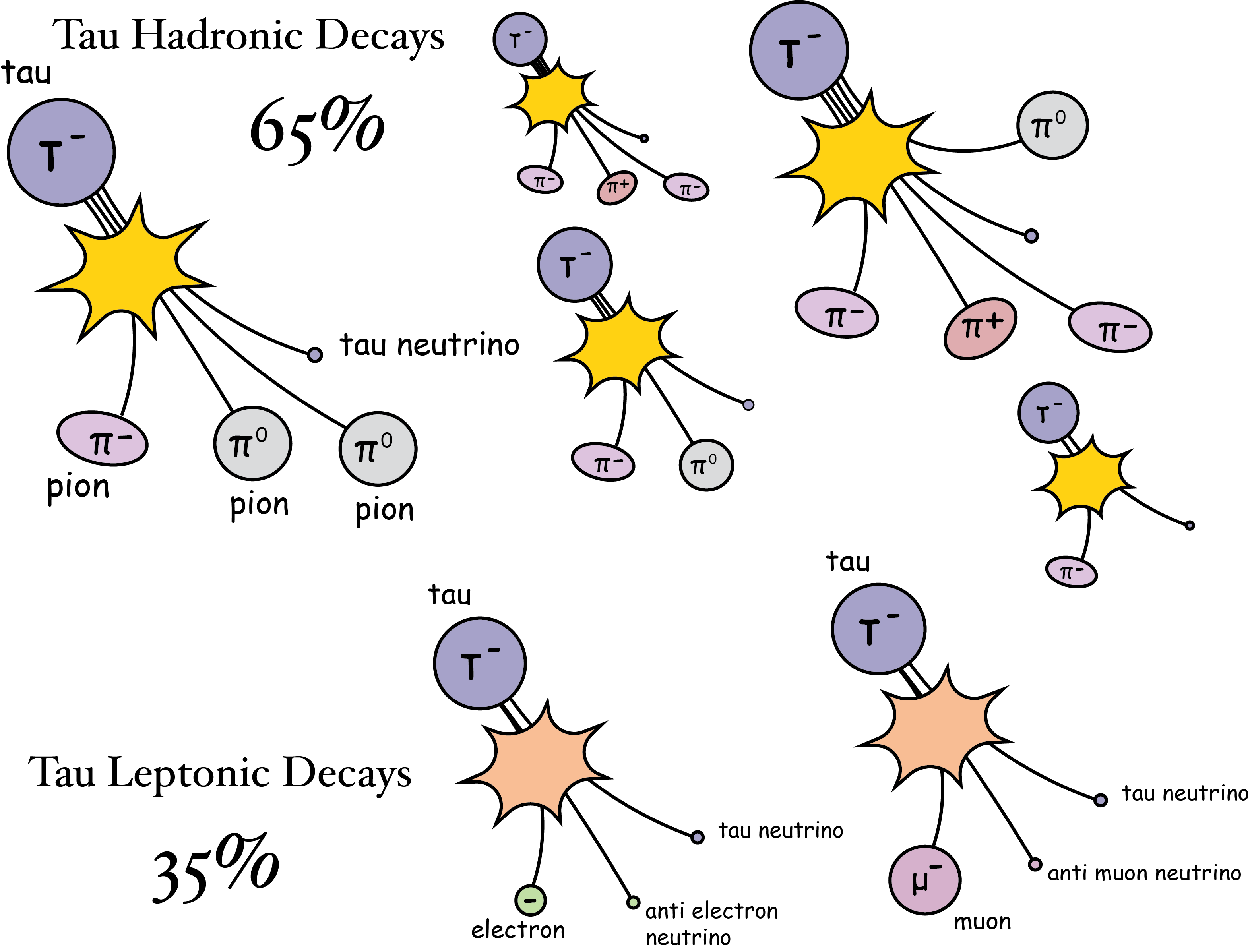
The Tau Lepton
The tau is a very heavy species of elementary particle that aren’t quite as common as the electron or the muon. Nevertheless, just as the muon shares many of the properties with the electron, so too does the tau.Like all elementary particles, taus have no known size. But they do have a known mass. At 1776.86 MeV, it’s a pretty big mass. That’s well over 3000 times the mass of the electron, or just shy of 17 times the mass of the muon. That large mass is key to understanding the tau, especially how it decays.
Taus are not stable. Heavy particles rarely are. Taus decay to all kinds of other stuff. Generally, heavier particles can decay into lighter particles so long as things like electric charge are conserved. Muons aren’t terribly heavy, and so decay primarily to electrons because there’s not much else to decay to. Taus by contrast, are so heavy they can decay into all kinds of things.
Because taus are so heavy, they can decay to hadrons - a fancy name for all that nuclear junk - and those decays happen quickly. Very quickly. There are just so many options. On average the taus only live for about 2.9×10−13 seconds. Forget nanoseconds. That’s less than a picosecond! That’s why taus so rare, they just don’t survive very long.
Figure: Tau Decay

he tau is an unstable lepton that decays rapidly. Because it's so heavy, it has an opporunity to decay a number of different ways.
Taus, like electrons, also have antiparticle partners. The antitau, which comes complete with a positive electric charge.
Sixty-five percent of the time, taus decay to nuclear junk. There are so many possibilities. The other twenty-four percent of tau decays go to muons. Given the large mass of the tau, there is a lot of rest mass energy - E=mc2 - to go around. Cataloging all the different options is a precision science that lets us study the minute details of particle physics. Those details can tell us a lot about other kinds of things.
The tau is the heaviest in the family of charged leptons: Electron. Muon. Tau. So far as we can tell, that’s the end of the pattern. Calculations have shown that another, even heavier version of the electron would throw off many of the precise relationships between other particles, and lead to predictions that are already ruled out by experimental observations.
Like I said, those precision details of tau decays - together with other precision measurements in particle physics - can tell us a lot about our universe.